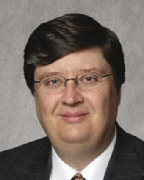To date, the green movement in commercial real estate has centered around LEED Certification for ground up development. But what about day to day property management of existing projects? How do environmentally sound practices find their way into the process when planning for new tenant build outs and large scale capital projects? These are questions Waterstone Retail Development has been asking as the company moves to incorporate environmentally sound practices into its business model.
Fortunately, in January, the USGBC introduced its new LEED for Existing Buildings rating system. The system has enabled Waterstone to begin to develop standards for its existing properties in tandem with its plans for LEED certification for new development projects.
With a portfolio of twenty six community shopping centers spread across New England and the southeast, the buildings are not without their challenges. Most were built during the 1970s and 1980s and contain aging roofs and HVAC equipment, dated lighting and large asphalt parking fields. Regional climate differences provide a wide range of challenges as well.
While Waterstone has always considered a products' lifespan and maintenance requirements when specifying products and services, now more than ever, the company is also evaluating the impact those products have on the environment. Add to that the ever present pressure to control tenant reimbursable operating expenses in the face of rising energy costs and you have the recipe for a complex decision making process.
Strategies have included the purchase of more energy efficient HVAC units. The company found it could substantially raise the Seasonal Energy Efficiency Ratio (SEER) rating on a unit for minimal cost, trading up for as little as $600 to $700. Tenants in Waterstone's southern properties benefit from the decision to replace dark roofs with white. During a recent re-roofing project in Shelby, N.C., Waterstone chose a Carlisle white Sure-Weld TPO membrane which is both Energy Star-rated and Cool Roof Rating Council (CRRC)-certified. The material has been directly linked to a reduction in energy use and cooling costs and has now become the company's material of choice for its southeastern portfolio. Additionally, on the Shelby project Waterstone made the choice to upgrade to 2" polyisocyanurate insulation for added cooling efficiency.
Waterstone is also starting to test the waters with LED lighting. A new Pylon sign at the company's Merchants Plaza in Spartanburg, S.C. will be lit with LED bulbs. Parking lot lighting provides its own set of challenges in the search for energy efficient alternatives that simultaneously meet an anchor tenant's desire for increased levels of foot candles in their parking fields. The company is currently in the process of retrofitting some parking lots with newer, more energy efficient versions of metal halide lights. "Hockey puck" fixtures, which use 175-watt metal halide bulbs, require fewer poles, cut down on light pollution, have better color rendering, and use 70% less electricity than "cobra head" fixtures using 250-watt high-pressure sodium bulbs.
It is important to help tenants understand the value add of many of these environmentally motivated decisions. It is Waterstone's belief that smart retailers will be motivated to partner with developers who are both fiscally and environmentally savvy. Revisions are currently underway to tenant build out criteria to encourage and in some cases require the installation of energy efficient lighting and water reducing plumbing fixtures. While many national chain stores have already joined the green movement, Waterstone's centers contain a high percentage of local retailers. Educating them is key to the success of the company's green strategy.
Waterstone is also leading by example. A new satellite office in Spartanburg, S.C. is a proud example of policy in action. Green products were selected at every stage and encompass the most basic; with no VOC paints and carpet made from recycled material. Furniture comes from a company with long term environmental initiatives. Upholstery fabrics are manufactured using recycled material and window coverings provide solar shield to increase cooling efficiency during the long hot Carolina summers. Energy efficient low voltage fluorescent fixtures light offices and common areas while a windowless office contains a Solar Tube to bring natural light into the space, improving the work environment and reducing the need for overhead lighting during the high percentage of sunny days. Lights contain occupancy sensors, plumbing is low flow and cleaning products are green. All sound strategies for a company looking to reduce its long term environmental impact along with its costs.
Douglas Richardson is vice president of development, Waterstone Retail Development, Needham, Mass.
Tags:
Waterstone Retail Dev. moves to incorporate environmentally sound practices into its business
August 20, 2008 - Retail









